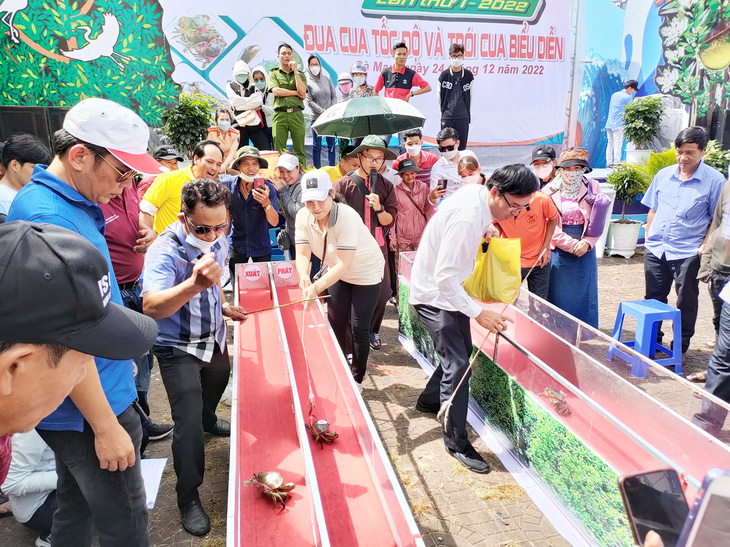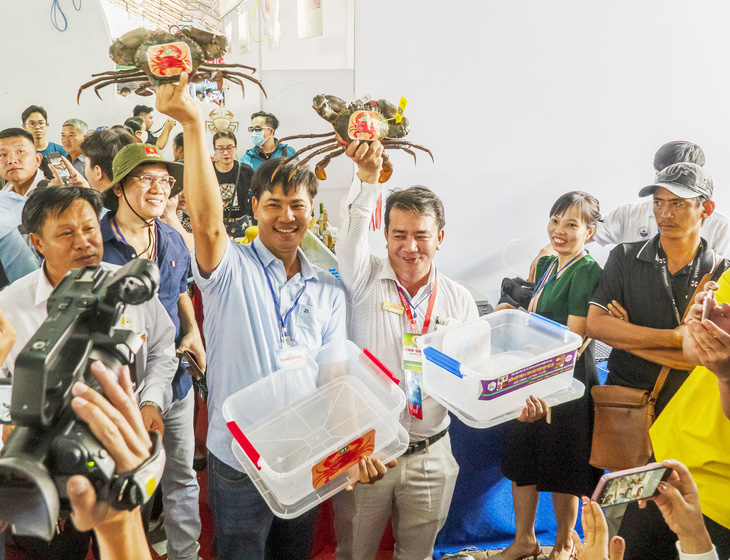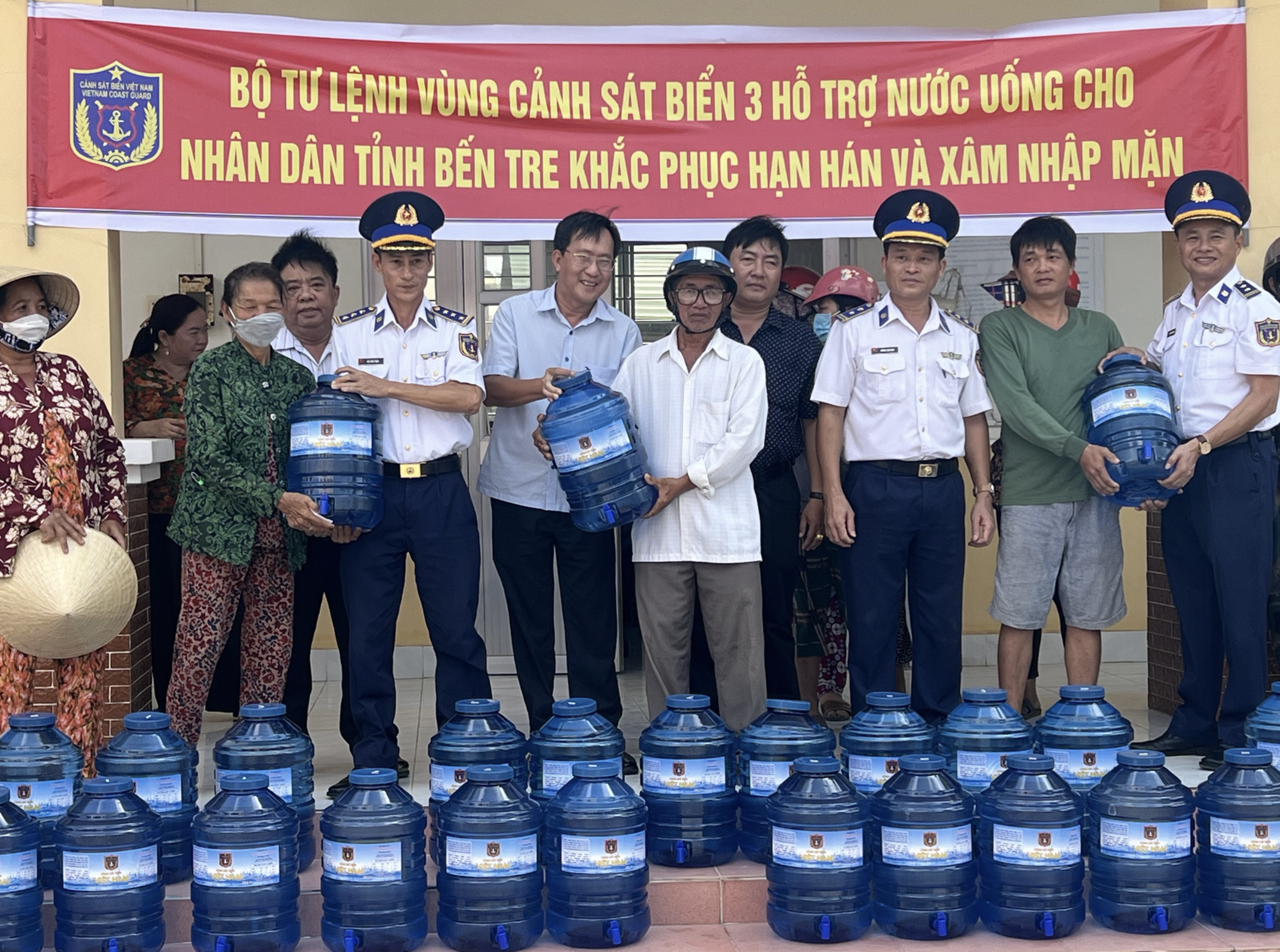Besides their reputation as a delicious seafood choice among Vietnamese diners, crabs from Vietnam’s Ca Mau Province are now being trained for entertainment races.
Athlete crabs go through meticulous selection, training, and proper treatment to ensure their chances of victory.
Crab is considered a key product in Ca Mau and is well known among seafood lovers for its outstanding meat quality.
The recent provincial step to organize crab races was aimed at promoting their delicacy to both Vietnamese and foreign visitors.
With the growing popularity of this activity, certain people have opened racer crab farms.
In 2019, Peerpaol Triyakasem – an expert in tourism – once proposed an idea to local people in Ca Mau regarding their high quality crab products.
“Why don’t you host an annual day to honor the Ca Mau crab? It’s basically an outstanding seafood type,” he said.
The man was then chairman of Vietnam Center in Thailand and chairman of Virgo Solution tourism company.
Crab’s speed and other attributes
Due to the impact of the COVID-19 pandemic, that idea was not realized until 2022.
However, local people promptly saw the shortcomings of a crab festival simply full of crab dishes.
They discussed extra activities where the crabs could exhibit their full potential.
The idea of crab racing popped up as a once popular river boat race in the area sprang to mind, and that was the birth of a brand new racing game.
The Ca Mau crabs are well known for their cleverness and stamina, which are only reduced if they are drugged or trapped.
In their best state, they elude human hunters whether in muddy puddles or in rivers and streams.
Considering such noticeable features of the crabs, the speed needed for racing was a certain feature.
Vo Trong Nguyen from Nam Can District is a racer crab keeper.
“The crab can even catch swimming fish in the water. I dare any man here to successfully catch a crab on the run,” he said.
More importantly, Nguyen appreciated the natural habitat of the Ca Mau crabs that contributed to their strength, competitiveness, and confidence in the face of human beings.
Ca Mau crabs tend to display hostility toward humans they encounter, raising their claws and getting into positions.
The racer crabs, therefore, have the self-esteem and physical ability needed to become professional racers.
The entrants are categorized according to their weight, 300 grams, 400 grams, and 500 grams, for each race.
They appear well-practiced and ready for the hour.
Their owners are genuine farmers with a thorough understanding of this animal.
Vo Van An from Dam Doi District believes that the hairy crab race is the most suspenseful.
“They’re small, but run like the wind,” he explained.
Each crab keeper has a small stick to physically push their crabs if they appear to have lost focus or have stopped dead in their tracks.
The weight is the only criteria for crab races, so entrants can be both male and female.
The crab race in Ca Mau highlights a sense of fairness.
“I take my female crabs to the race because they are much cleverer and faster than the male ones,” said Pham Ty Ni from Thanh Tung Ward, Dam Doi District.
“I’m pretty sure the females have a higher chance of winning in this type of racing game.”
Training racer crabs
To ensure safety and boost their speed, crab racers have their claws tied up, which is similar to the protective gear for human athletes.
However, it is no mean feat producing a winning racing crab.
It takes keepers months to train their athletes.
Nguyen Minh Hien from Nam Can District owns the champion of the 300-gram crab race.
“Racer crabs have to be well selected and go through rigorous training,” Hien said.
“We have to look at their physique first, and we only choose the naturally grown ones.
“Then comes the practice phase.”
The training program for racing crabs is quite challenging, and athlete crabs are kept in a separate tank.
Part of the training includes feeding the crabs with live fish, prompting them to catch their meals.
The daily sun baths and trips to simulation racing tracks improve the crabs’ confidence with humans all around.
These also help to check their progress.
According to Hien, only a few out of a dozen crabs meet the criteria for race entrants.
The crabs stay on a healthy diet as well. Those eating more than necessary will be disqualified, and so will the weak ones that fail to catch their prey.
Special care is given to the racers as the racing day approaches.
|
|
| Each crab trainer has a stick to physically push their entrant in case they stop dead in their tracks. |
An, from Dam Doi District, owns a 400-gram racing crab.
“We have to take care of its mentality before the race. The crabs also have their personality,” he said.
“We can’t take ones that are too fierce, or those too timid.
“During my trial races, I opt for the crabs with stable performance and not easily distracted by external factors.”
At the race, all the athletes appear energetic and ready to prove themselves. Their owners rejoice over their victories and take a delight in the trophies earned.
Others whose entrants did not make it are determined to try again next season.
Such racer crabs have a far different experience than their tank-confined counterparts merely sold as seafood.
The owners all agree that these crabs will be either released into the wild or taken care of at home, but will not become dinner.
Racer crab raising, therefore, has become a job in Ca Mau.
|
|
| Winning racer crabs are lifted by their owners following the race. Photo: Quoc Rin |
The scope expands
The people here boast profound understanding of crab behaviors.
From unofficial sources, the crab races in Ca Mau will not only be here to stay, but also expand in scope.
The future crab athletes are highly promising thanks to the constant efforts of racer crab keepers.
The crab racer training zone
Training racer crab is a meticulous process.
The local keepers create an agenda for their training and feeding, with a focus on the crab’s reflex based on their know-how of this crustaceous animal.
Some keep their crabs in separate tanks or ponds to avoid in-group fighting.
Also, the keepers make sure their crabs get exposed to more nature despite their captivity, in order to boost their weight and racing skills.
Those owners with better funding can create their own racing tracks and keep daily track of their crabs’ performance, based on which they select the best candidates.
The key to success is the quality of living foods and proper timing of meals to increase the crabs’ physique and confidence.
Female crabs, especially virgin ones, tend to have an edge in races due to their superior speed and reflex compared to male athletes.
Like us on Facebook or follow us on Twitter to get the latest news about Vietnam!





